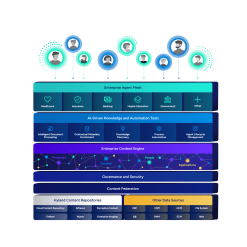What is accounts payable automation?
Accounts payable (AP) automation is the technology that streamlines the end-to-end accounts payable process, from procurement to invoice processing to payment approval.
AP automation minimizes human intervention and manual touchpoints across your finance department’s workflows. As a result, teams work with greater efficiency, accuracy and visibility daily.
Some of the manual functions that can benefit from automation are:
- Invoice capturing
- Data validating
- Purchase order matching
- Invoice routing and approval
- Payments
- Reporting
How does AP automation work?
AP automation works by converting paper invoices to standardized, digital copies using optical character recognition (OCR) technology. The electronic invoices are then pushed through a workflow of reviews, edits and approvals until it is ultimately paid.
In addition to OCR, this process involves tools like machine learning, artificial intelligence (AI) and business process automation (BPA).
AP automation streamlines three core objectives, which are:
- Digitizing invoice receipts
- Automatically matching invoices to purchase orders (POs)
- Keeping invoices electronically archived for audits
Related articles
The four key features of an AP automation platform
Implementing an AP automation platform is becoming the industry standard for financial teams who need greater visibility and control over their operations. Your chosen AP management system should have core features such as:
Data capture technology
OCR and intelligent capture technology allow teams to automatically extract data from paper invoices. By keeping vital data (supplier information, billing amounts, etc.) stored in a consistent format, the technologies reduce the risks of error that come with manual data entry. Your preferred AP automation platform should be able to capture and convert invoices in email, paper and other formats.
Invoice matching
Your AP automation software needs to be able to match POs, invoices from suppliers and goods received notes (the “three-way matching” technique) with greater efficiency as compared to manual, paper-based AP processes. It has to be able to correct data errors, missing information and data mismatches by notifying reviewers or managers instantly.
Integration and mobile access
The right AP automation platform can integrate seamlessly with accounting systems, ERPs and email clients so employees can view all information from one platform without switching applications. The added convenience of mobile access makes approvals faster and easier for remote employees.
Real-time data and analytics
Your teams should be able to get a complete view of the end-to-end accounts payable process and generate reports that provide insight into cash flow and process bottlenecks via your AP automation platform. As a result, your accounts payable data can be audited with ease through one interface rather than relying on paper documents.
Benefits of automating accounts payable
AP automation increases visibility, control and efficiency across the whole process. An automated AP process helps transform AP departments from cost centers into profit centers, so AP professionals can focus on supporting strategic business goals.
AP automation benefits include:
Improving efficiency and accuracy
By automating invoice capture, errors caused by manual data entry can be eliminated. This also saves an employee’s time, which can be spent on activities that require human interaction instead.
Maximizing savings
Factors like paper, postage fees, photocopier ink and legacy software maintenance all contribute to process invoicing costs. But once these cost drivers are reduced through automation, your cost per invoice is cut down as well.
> Learn more | The ROI of AP automation
Streamlining routing and approval processes
Once invoices are captured in the system, they can be automatically routed to the relevant approvers when certain conditions are met. Invoices no longer have to be walked over to the approver’s desk where they may sit for a few days before getting attention.
> Read more | Accounts payable automation: Real-world success stories
Reducing the risk of fraud
Tracking capabilities record all activities on a particular transaction and create a fully visible audit trail. This minimizes instances of fraud, theft and costly errors.
Digitizing invoice processing
In a traditional paper-based environment, it is difficult to locate where everything is or know what stage each invoice is in. Most invoices are sent to AP departments as paper documents, so opting for e-invoicing reduces the amount of paper that employees have to sort, organize and file. With an AP automation platform, your invoices are stored in a central repository, so your teams can view the information they need from a single location.
You may also like:

Ebook
Integrated accounts payable automation
Reduce manual work and increase visibility across AP.
Search
Resource Center
Search for any resource available on Hyland.com.

Article
The benefits of AP automation
AP automation equals real-time visibility. Here's what to expect with strategic, automated AP processes.











